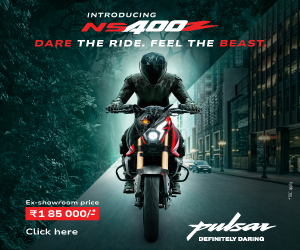 Yamaha have upgraded their first true Indian super sports bike, the R15. We take a ride to find out how it fulfils the aspirations of those who were eagerly looking forward to version 2.0 of this bike [Read more…] about Revised R15
Yamaha have upgraded their first true Indian super sports bike, the R15. We take a ride to find out how it fulfils the aspirations of those who were eagerly looking forward to version 2.0 of this bike [Read more…] about Revised R15
New Bike Road Test in India
The Clincher Kwacker
 It’s green. It’s a tourer. It’s fast. It’s comfy. It’s top-notch. And it’s affordable. Ladies and gentlemen, please put your hands together for the Kawasaki Ninja 650R.
It’s green. It’s a tourer. It’s fast. It’s comfy. It’s top-notch. And it’s affordable. Ladies and gentlemen, please put your hands together for the Kawasaki Ninja 650R.
To Each His Own – Discover 125
 Bajaj Auto has filled the void in its Discover family of bikes by launching the Discover 125 DTS-i again. It has a different character from the earlier one and a lot of water has flowed under the bridge since then too. So how does the new one fare against the bunch of 125s out there? Piyush Sonsale answers [Read more…] about To Each His Own – Discover 125
Bajaj Auto has filled the void in its Discover family of bikes by launching the Discover 125 DTS-i again. It has a different character from the earlier one and a lot of water has flowed under the bridge since then too. So how does the new one fare against the bunch of 125s out there? Piyush Sonsale answers [Read more…] about To Each His Own – Discover 125
CRUISE CONTROL
 It took hours of non-stop riding on the Hyosung ST7 cruiser for it to disclose its good, bad and ugly traits. Sarmad Kadiri shares his felicitous anecdote from the ride [Read more…] about CRUISE CONTROL
It took hours of non-stop riding on the Hyosung ST7 cruiser for it to disclose its good, bad and ugly traits. Sarmad Kadiri shares his felicitous anecdote from the ride [Read more…] about CRUISE CONTROL
The Fastest Korean
 The Hyosung GT650R is here. It’s quick, it’s fast and it’s ready to fill up an unexplored slot in the Indian market [Read more…] about The Fastest Korean
The Hyosung GT650R is here. It’s quick, it’s fast and it’s ready to fill up an unexplored slot in the Indian market [Read more…] about The Fastest Korean

